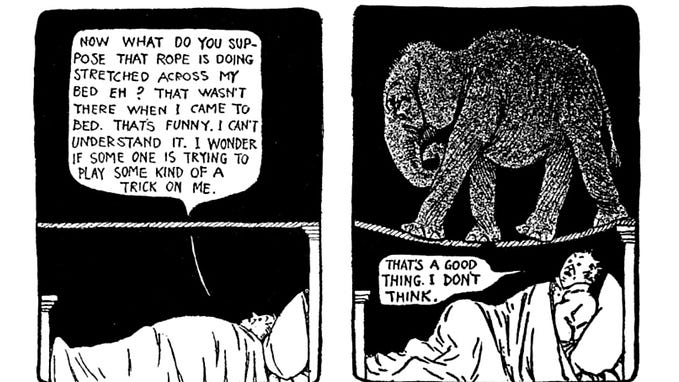You're reading for free via Odin Halvorson's Friend Link. Become a member to access the best of Medium.
Anarchist Archives
Understanding the differences between anarchist collections and mainstream collections.
The International Anarchist Archives: A Report on Conditions and a Proposal for Action (2012) is a small-scale study of self-acknowledged “anarchist archives” around the world. These archives collect material related to the political and philosophic principles and practice of anarchism, many of which are ignored by more mainstream academic collections.
The study’s author, Dr. Andrew Hoyt, has extensive publications in the field of anarchist studies and history, with peer-reviewed publications focusing on labor migration, radical print culture, and transnational social networks.
Hoyt conducted direct interviews with representatives of these different archives to gather his data, in combination with a reading of materials about the archives that were created by sources outside those organizations.
The first section of Hoyt’s paper lays the groundwork for understanding the function, growth, purpose, and environment of these archives of anarchist materials, especially as they relate to archives that cater to more mainstream works. This section includes a review of essays about the function and history of archives, which Hoyt extrapolates onto the specific category of anarchist archives.
As Sandra Hirsh states in Information Services Today (2022), information organizations are “the gatekeepers to information and knowledge” (p. 6). This matches what the noted history scholars Francis Blouin and William Rosenberg write in their preface to Archives, Documentation, and Institutions of Social Memory (2006).
“Archives,” they write, affect not only “how the past is shaped and represented but how it is linked to the future… archives help to structure (or ‘write’) what the future will be like” (p. ix). Thus, while archives are invaluable, they are also inherently biased at an extremely high level, interconnected to their society and the systems of social support on which they rely for survival.
This connects to what Hoyt describes: that “groups who stand in active opposition to the state and capitalism have received marginal coverage in mainstream archival records and have been relegated to a subaltern position on the periphery of public memory” (2012, p. 31).
The fact is that any archive of knowledge, from Wikipedia to the most revered academic reference library, will contain biases inherent to its place in the society that maintains it. For Wikipedia, for example, a constant struggle of democratic editing, State-sponsored editorial sabotage, and the constant threat of rising costs are some of the factors that hem in the service’s noble mission.
As for traditional archives, the restrictions placed upon the materials present a fundamental barrier to democratic access, let alone the horizontal, non-hierarchical access that an archive of anarchist texts would require. As Eric Ketelaar writes in his essay The Panoptical Archive, “the surveillance and discipline in archives are ingrained in the archivist’s professional distrust of anyone other than the archivist using the archives. … The rituals, surveillance, and discipline serve to maintain the power of the archives and the archivist.”
These practices must supposedly protect the collections as well, though in an age of increasing digitization, it’s difficult to see any reason why the digital collections should not be made wholly accessible, even if the originals need to be safeguarded in some way.
For his study, Hoyt contacted several anarchist archives around the world and interviewed available representatives, digging into everything from funding sources to threats faced by the archive, to the daily nature of how these archives are maintained. While his sample was small (less than a dozen such archives), he discovered that anarchist archives, in general, handle the concept of access differently from traditional archives. Anarchist archives accept the support of professional volunteers, interested laypeople, members of the local community, and visiting scholars, and frequently provide broad access to the materials for anyone interested.
“In general,” writes Hoyt, “there is a great deal more openness and trust in the anarchist archive community than in most professional archives, but then there is much less monetary motivation for theft and a greater community based peer-pressure preventing antisocial behavior” (2012, p. 36).
Hi there! I’m Odin Halvorson, an independent scholar, film fanatic, fiction author, and tech enthusiast. If you like my work and want to support me, please smash that “clap” button (up to 50 times!) and subscribe! You can also join my newsletter and get free access to the articles I write!
References
Blouin, F. X., & Rosenberg, W. G. (Eds.). (2007). Archives, documentation, and institutions of social memory: Essays from the Sawyer Seminar. University of Michigan Press.
Eric Ketelaar. (2007). The panoptical archive. In Francis Blouin and William Rosenburg (Eds.), Archives, documentation, and institutions of social memory: Essays from the Sawyer Seminar (pp. 138–155). The University of Michigan Press.
Hirsh, S. (Ed.). (2022). Information services today: An introduction (Third edition). Rowman & Littlefield.
Hoyt, A. (2012). The International anarchist archives: A report on conditions and a proposal for action. Theory In Action, 5(4), 30–46. https://doi.org/10.3798/tia.1937-0237.12031









